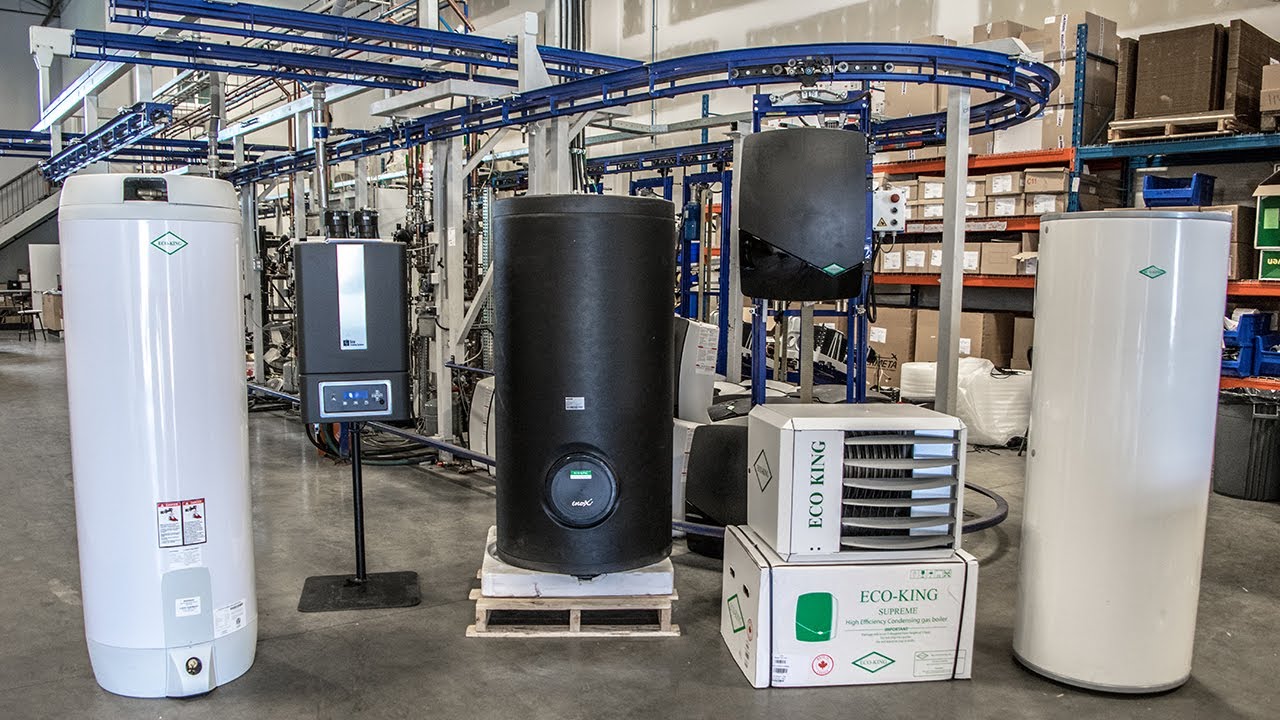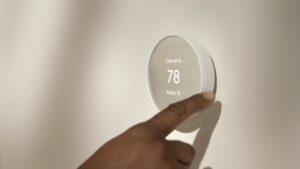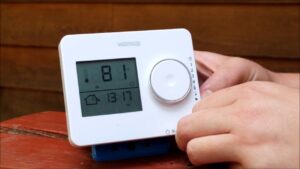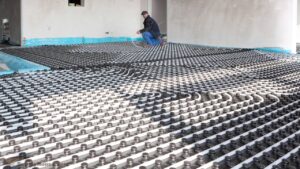An electric home heating system is an excellent choice for anyone who wants to keep their home warm without spending too much money. Unlike the traditional heating system, this alternative requires no special tools and does not emit harmful air pollutants. It can be installed in any room, without requiring a separate boiler room. Another benefit of an electric system is its ability to control humidity levels, which is particularly important if you live in Texas. Another advantage is that it does not require any special permits or services, and requires minimal preparation.
The disadvantage of an electric heating system is its high power consumption. As an energy-efficient home heating system, electric heating systems are not very profitable. In addition, they are energy-dependent, so you will not be able to heat your home if there is no electricity available. Electromagnets are susceptible to unsteady voltage, which is especially common in rural areas. To solve this problem, you can install a generator, but this will increase your electrical bill.
Electric heating systems are an attractive alternative to gas, oil, and propane-fired heaters. They are convenient and easy to operate. As long as you have a good electrical plan, you’ll be good to go. Its benefits far outweigh its cons. The best heating system is the one that suits your lifestyle. The best choice for you depends on where you live, your lifestyle, and the type of electricity you use.
An electric home heating system consumes more electricity than an air-conditioner. As a result, peak demand in winter can affect power grids. An Austin-based energy research company found that converting all homes to electric heating would increase the power demand in winter by 23 percent. A new survey is due out later this year. And the benefits of an electric home heating system outweigh the downsides. You won’t have to buy expensive, over-the-counter electricity, and will still have a reliable heating system.
A downside of using an electric home heating system is the cost of operating it. At the current national average, operating a 1,500-watt electric unit will cost an average of 18C/h. That’s more than double the price of an average gas heater. If you’re going to use your heating system intermittently, an electric system is a great choice. This method saves money while reducing emissions and saving the planet.
An electric home heating system is an excellent option if you want to avoid paying a hefty carbon tax. If the government is willing to pay the installation costs today, the government may be willing to match the amount with a carbon tax. This would enable consumers to use less carbon fuel, while allowing electricity producers to increase their fleet. A government program for electric home heating would be a great step in the right direction for both environmental protection and the environment.
One of the biggest benefits of an electric home heating system is its ease of installation. There is no need to dig up floors and remove pipes in order to install an electric heating system. It can also be easily installed by do-it-yourself enthusiasts who know what they are doing. Once the system is installed, you can plug it in and enjoy the warm air. This means no more waiting around for plumbers to complete the installation. There are even electric radiator kits available that can be installed by a home owner with minimal assistance.
Solar home heating
Solar home heating systems work in a similar way to conventional gas and oil furnaces. They use heat collected in solar collectors to generate hot water for your home. The system has a pump station, which circulates heating fluid in and out of your home. Pump stations are composed of several key components including fill and drain valves, an air purge valve, shut-off valves, flow meters, safety pressure release valves, and expansion tank connections.
The use of solar power can reduce energy bills by 25 to 100%, depending on the size of your solar collector. Even a small solar home heating system can help save a percentage of your monthly energy bill. Large solar home heating systems can generate enough heat to heat your entire house all winter long without needing outside energy. A solar space heating system is most cost-effective for use in cold climates, especially those with good solar resources. It can also replace more costly heating methods such as oil and gas.
In addition to saving energy, solar home heating systems are low maintenance and will last for years. You should only need to replace antifreeze solution every three to five years. This cost is well worth it when compared to other types of heating systems. The cost of installation is approximately two to three thousand dollars. Using a solar water heater can save you thousands of dollars in the long run. As with any electrical system, it’s important to research the costs associated with solar heating before making a decision.
The installation of a solar system can reduce electricity bills by 50 to seventy percent. With the right solar heating system, you can expect to pay back the installation cost in three years, with free heat for life. Another benefit of a solar home heating system is that it is environmentally friendly. Fossil fuels are a major source of greenhouse gas emissions, which contribute to air and water pollution. Also, fossil fuels are limited in deposits, so switching to solar power will help you solve these problems.
A combination of solar collectors and a heat exchanger can maximize the investment that you make in solar heating. In addition, if your home is oversized, you may need to add more solar collectors to the system. In addition, you may also want to consider adding a summer heating zone and pool heat exchanger. This will prevent cold air from entering the registers of the home when the solar collectors are not sufficient. In addition, a solar home heating system that works properly can make your water heater last for several years.
Once the solar collectors are in place, you’ll need a storage system. Most homes have a hot-water tank to store heat that is collected from the collectors. This storage tank is a sort of “hot water battery” that stores heat overnight and is ready for use during the day. You’ll need a bigger tank than you do for a standard electric heater. A typical family home tank is approximately 100-200 liters or thirty to sixty gallons.
Boiler home heating
There are many different kinds of boilers. Some use fuel, such as natural gas, while others run on propane. While natural gas is the most widely available option, propane is also more expensive and is not available everywhere. Oil-fired boilers, on the other hand, use heating oil, which is expensive, but is widely available in the U.S. A boiler is also more energy-efficient than an air-conditioning system and can save homeowners hundreds of dollars each year on energy costs.
Before purchasing a boiler, be sure to determine the right size for your home. Buying a boiler too large will waste energy and may not work efficiently. To make sure you purchase the correct size for your home, ask a heating and cooling professional to use the ACCA Manual J calculation, which takes into account the size of the house, wall thicknesses, insulation values, windows, and foundation. Another thing to consider when choosing a boiler is whether or not your home needs air conditioning or not.
Some homeowners opt for hydronic radiant heating, which is more efficient than forced-air and baseboard heating, and requires less electricity than either. However, this heating system can be expensive to install and repair, and may not work as well on thick carpets. Alternatively, you can opt for a condensing boiler, which concentrates water vapor during the heating process, and reuses the heat it produces to preheat cold water. The condensing boiler provides adequate heat even at lower temperatures, and is often more energy-efficient than the former.
A combination boiler is a good choice if your home needs hot water for both heating and cooking. Combining a boiler and an indirect hot water tank will maximize efficiency and give you an unlimited supply of hot water. These boilers are also designed to work with a central air handler, baseboard radiators, or an in-floor heating system. If you’re not sure which type of boiler to purchase, you can request a free consultation.
As with any type of heating system, the best option for your home will depend on your needs and preferences. The pros and cons of a boiler over an air-conditioner include low maintenance and energy efficiency, and ease of installation. Additionally, a boiler is not as convenient for those who prefer to have a forced air system. Although boilers are usually more expensive than furnaces, they can reduce airborne pollutants while heating your home. A disadvantage is that they take more time to install and require more money upfront. However, a boiler is more expensive to purchase and install, and water pipes will require repair or replacement as they get older.
If you are concerned about your boiler’s safety, check the area around it. Make sure there are no loose wires, flammable materials, or other objects near the boiler. Use a flashlight to check the boiler. Turn it on and observe it in action. Look for leaks or cracks. It is essential that you check the boiler regularly and if there’s any damage, you can call a professional to fix it.
Bedroom heating system
If you’re in search of an efficient bedroom heating system, you’ve come to the right place. Infrared heating panels can transform your bedroom into a warm, cozy haven during the coldest months of the year. Compared to conventional heaters, infrared heating panels use radiant heat transfer to provide even heating. They use less energy, improve blood circulation, and boost immunity levels. And they’re silent, too, so you won’t wake up to an ear splitting noise.
A broken bedroom heating system can cause conditioned air to flow through a different duct or the adjoining room. If you’re having trouble with a specific duct, check for any holes, crimping, or collapsed areas. Also, check for animal damage on the ducts. If they’re ripped off, replace them and improve your home’s energy efficiency. The problem is likely a broken duct, but there are several fixes to keep it running smoothly.
A mix of heating systems makes use of both main heating and individual room heaters. These types of heating systems may have separate zones, such as the bathroom or kitchen, and use air ducts and blowers to regulate the temperature. In larger residential buildings, mixed systems may be used to heat multiple rooms while utilizing the main heating. These systems also provide cooling in the summer months. If you’re in doubt about whether your heating system is working properly, check out InspectAPedia’s article link on residential heating systems.
Whether to use a supplementary heating system or not, convector heaters can offer the right amount of heat for your needs. They heat air near their heat source and circulate it evenly around the room. Convector heaters can be an effective alternative to forced air systems, as they’re more energy-efficient. A convector heating system can also be set on a timer and thermostat, allowing you to determine how much heat the room needs.
Radiant heat is a form of thermal energy transfer from a liquid to a solid surface. The circulating water system, also known as a hydronic heating system, uses a centralized boiler to heat water and circulates it through a series of water pipes. In addition, thin metal fins on the water pipes radiate heat. The hot water baseboard system has the advantage of being quiet and doesn’t require ductwork.
Heating mattress pad
A heating mattress pad contains electrically powered elements that distribute warmth throughout the mattress pad. Aside from providing warmth, it can also help protect your mattress from body residue and fluids. The best heating mattress pads come with safety features, such as low voltage heating mechanisms. The following are some safety tips for using this type of mattress pad. Keep these tips in mind when shopping for one. The heating mattress pad should fit your bed size. Once you purchase it, you will need to set it up.
A good heated mattress pad will be easy to use. Most will have a knob or a digital display that you can turn on or off. Some models have multiple temperature settings, while others are set to heat just one side of the pad. Some heating mattress pads even have remote controllers. Choose one with large digital numbers if you have poor eyesight. The temperature display should be easy to read, as well. It should also come with an automatic shut-off timer and two temperature zones.
Most heating mattress pads are machine washable, although some aren’t. It’s best to check the manufacturer’s label to determine the temperature range. In general, it takes about nine to ten minutes to heat the pad to maximum temperature. It’s best to check the label to determine the maximum heating time, so you don’t overheat the mattress. If you do decide to purchase a heating mattress pad, it’s important to take note of any safety precautions.
While heating mattress pads are typically aimed at keeping the mattress warm, you should use one with a temperature control switch. This way, you can adjust the temperature as needed. The temperature controller is easily accessible and won’t accidentally turn off while you’re sleeping. A heated mattress pad is also a good option for bedrooms where children or pets sleep. The heated mattress pad is waterproof, and can also be used with breathable cotton bedding. You’ll be pleasantly surprised at how many people find it helpful.
If you suffer from back pain, it can be helpful to use a heated mattress pad. This can reduce the symptoms associated with low back pain and alleviate the pain caused by stiff muscles. A heated mattress pad has many benefits and is an excellent investment if you are worried about your EMF exposure. It can help you fall asleep easier and stay warm at night. So, take a look and consider whether one of these products is for you.
Safety should be your top priority. A heated mattress pad can be extremely useful for people living in a cooler climate. You must ensure the pad meets government safety standards. It should not be too hot, and you should set it on a timer to save you from getting burned. And remember to always follow the manufacturer’s directions before using the product. If you do buy one, make sure you don’t touch the wires as you may get an electric shock.





